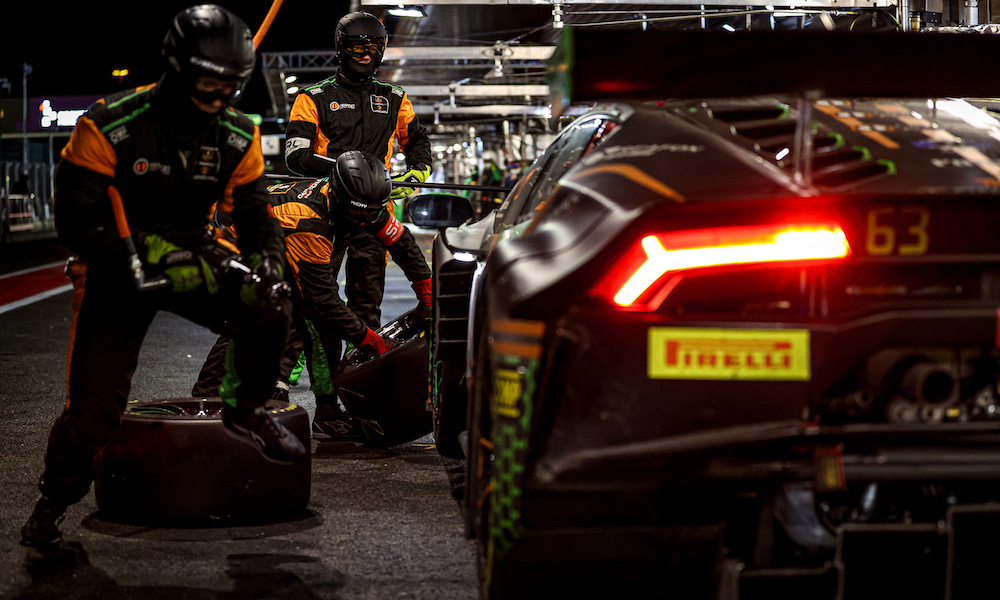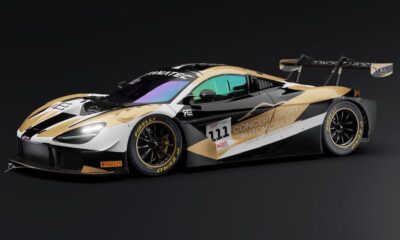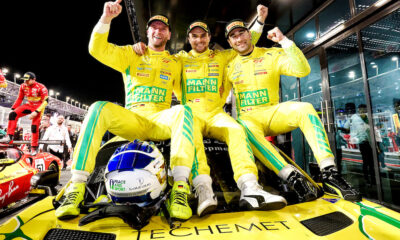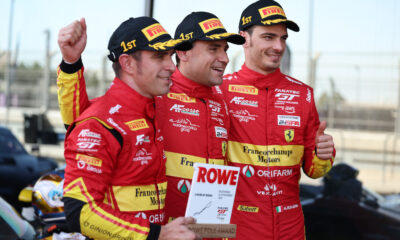
Photo: Kevin Pecks/SRO
Teams will return to changing tires and refueling their cars at the same time as part of a planned update to the Fanatec GT World Challenge Europe powered by AWS Endurance Cup sporting regulations for 2021.
Last year, series organizer SRO Motorsports Group opened up the level of competition during pit stops by permitting teams to change tires and refuel their cars separately.
SRO founder and CEO Stephane Ratel told Sportscar365 that the integrated tire change procedure last seen in 2019 has been revived in order to ease certain demands on teams.
“We’re changing every year,” said Ratel. “Now it’s the same as last year, but you refuel while changing tires, to take away pressure on the tire change competition.
“That was a request of the teams, and the large majority wanted that to kill a bit of training on fast tire changes.
“It became [the case where] the good tire changers had more value on the market than the best engineers. So then they started to say, ‘stop. We are not going in the right direction”.
While SRO has yet to publish the 2021 GTWC Europe sporting regulations, the new pit stop rules are understood to be a hybrid between the rules from 2019 and last season.
In 2019, tire changes and refueling could be done simultaneously, although each car was required to spend a minimum amount of time between pit entry and pit exit.
Last year, the minimum pit time was scrapped in favor of a minimum refueling time for all services, except ‘short’ top-up stops in which up to 10 seconds’ worth of fuel could be added. The Total 24 Hours of Spa carried an additional four-minute ‘technical’ stop.
The minimum refueling time rule is set to return, alongside the 2019-style simultaneous changing of tires and refueling as well as the technical pit stop for Spa.
Stuart Parker, the team principal of former Bentley squad Team Parker Racing, has suggested that the latest rules will push teams to reduce their spending on pit stops.
“It doesn’t create an arms race in the pits,” he told Sportscar365.
“These wheel guns are costing the same as a small car these days: you can spend £8,000 [$11,000 USD] on a wheel gun that you’re having to service every other race.
“Because you’re running them at such speeds, they can’t withstand it.
“If you’re a Pro team with manufacturer backing, you can afford that. But when you’re a private team it’s very hard to keep up with the Joneses all the time.”
Haupt Racing Team principal Sean Paul Breslin added that the high expenses extend to pit stop personnel, in addition to equipment.
“We have 10 to 12 fixed staff at the racetrack, in a total of 30 people,” he said. “You need to bring those freelancers, wherever they live, to your workshop to spend days training. That’s really expensive.”
Parker suggested that mechanic safety is likely to be improved by the reduced pressure of tire changes that can be completed within the minimum refueling time.
“I was always worried when it was fully against the clock [when] you had lads running around with wheels trying to get sub-20 second pit stops,” he said.
“It was an accident waiting to happen, and at some point, somebody was going to get hurt.
“You’ve still got to be on the ball, but it does allow that little bit of time where you’re not physically risking the mechanics.”
Impacts on Competition, Team Preparations
On the other side, Breslin reckons that re-integrating tire changes into the refueling window could take away part of the spectacle that the 2020 pit stops provided.
Last year tire changes and refueling were done separately from round two at the Nürburgring, where some drivers expressed excitement at the added competition element.
“Even though we weren’t the best at it last year, I like the fast tire change,” said Breslin, whose HRT squad ran Mercedes-AMG GT3 Evos in Pro and Silver Cup last term.
“I think it’s part of the race. The pit stop is an impressive athletic spectacle, picking up and running with the wheels in 36-degree heat in Misano, for example.”
Breslin explained that in HRT’s case, the removal of open tire change competition will require the team to adjust how it develops its pit crew for its second season in GT racing.
Last year’s rules prompted some GTWC Europe outfits to train and invest in personnel specifically for the purpose of speeding up tire changes. For example, Bentley squad CMR hired former mechanics from Team WRT, which is regarded for its fast pit work.
“One of the main topics was to ensure that we had two really good pit crews for this year,” said Breslin.
“And I was really happy that we had achieved that, at the end of last year and over the winter. But with the rule changes, it’s not so necessary to have that anymore, because the guys don’t have to change the tires at quite the same speed as if it was a pure race.
“It’s a bit easier for the teams, I think. You don’t have to have such a highly trained pit crew in Endurance. I know that’s one of the reasons why WRT was so keen to keep it that way: they do have very well-trained pit crews with multiple cars.
“For all of us, it’s a cost-saving to not do it like that. But then if you’re doing Sprint Cup, you have to do the training anyway. And you need to have all the equipment.”
When asked about the prospect of pit stops losing part of their competitive element, Ratel said: “That’s the kind of thing we govern with the teams.
“‘For the moment, we’re working on a cost-reduction program.
“It’s one of the points that the teams said yes, that would really cut down the budget. [It was] an overwhelming majority.”


























